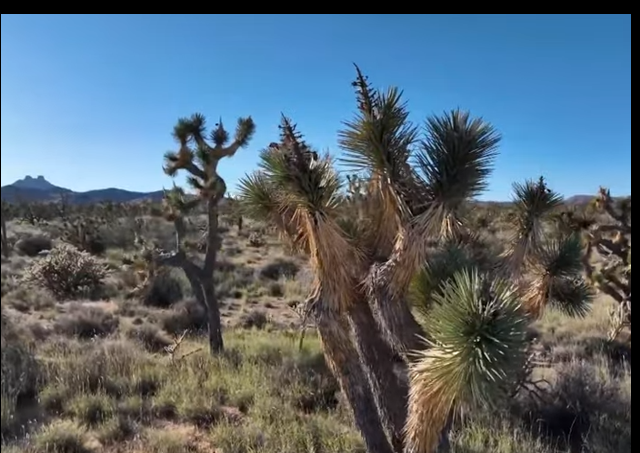California Crews Begin Mowing Down Region’s Iconic Joshua Trees for Solar Farm

Back in 2023, California Governor Gavin Newsom offered a bill giving the state’s iconic Western Joshua Trees “protected” status.
The Western Joshua Tree Conservation Act was prompted by the California Fish and Game Commission’s inability to act on a petition filed more than three years ago seeking to list the living symbols of the California desert as threatened under the California Endangered Species Act.“Compromise is always painful,” said Brendan Cummings, conservation director of the Center for Biological Diversity and an author of the petition. “But at the end of the day, I’ll be happy if this bill passes.”The Newsom Administration’s intervention reflects a volatile reality: Opponents of the petition warn that listing the western Joshua tree could derail private property improvements and renewable energy projects designed to help meet California’s climate change goals of shifting the state’s electricity system entirely off fossil fuels by 2045.
However, in 2020, Avantus (the developer behind the project) received an exemption from Newsom’s Fish and Game Commission to clear the trees. Arguably, the 2023 measure is a cover for the realities that are now being played out in the state.
As I noted in an earlier post, climate cultists insisted that they needed to chop down the Joshua Trees to save them from the carbon dioxide plants actually need for life. In the senseless quest for renewable energy utopia, a solar energy firm was given permits to proceed with the Aratina Solar Center, over the deep concerns and objections of area residents.
Despite comments and concerns from residence in Boron and Desert Lake, the Kern County Board of Supervisors approved a solar farm project which will include five different sites in the East Kern County area; the board voted on the approval at their October 12th meeting in Bakersfield.
It appears a massive green energy project cannot begin without a substantial outcry from the nearby residents, whose communities are being deeply impacted with few real gains in sustainable or reliable energy.
This week, work began on felling 3,500 of the 4,700 Joshua Trees that are on the site of the solar farm.
A 2020 survey counted 4,700 trees on the project site. Since then, however, the size of the project has been reduced.Hundreds of Joshua trees appeared to have been destroyed in the last week, but on some portions of the site the trees still stand, residents said. Neither the company nor government agencies would say how many trees have been cut down. Avantus, the developer, said fewer trees will be destroyed than the government approved.Heavy equipment has not yet started leveling the land where the trees were felled to prepare for the solar panel installation.Residents fear the earth-moving work will increase the threat of valley fever — a fungal respiratory infection that is transmitted in dust. A local group found the fungus that causes valley fever in samples of topsoil from the five parcels surrounding the towns where the solar panels will be built.
Residents are continuing to fight, launching a petition to halt further destruction of the Joshua trees.
A petition against the project was launched earlier this summer and currently has over 52,000 signatures.”Ancient Joshua Trees are going extinct, and we must save them. The Aratina Solar Project in Boron, California, is approved to destroy nearly 4,000 ancient Joshua Trees in this forest…These iconic trees have stood for centuries, providing habitat for numerous species and contributing to the unique biodiversity of our region,” the petition read.
If California politicos were seriously interested in reliable and affordable energy and protecting Joshua trees, they would be making plans to erect Generation IV nuclear reactors.
Instead, we are going to spend decades recovering from the environmental damage caused by climate cult pseudoscience.
CLICK HERE FOR FULL VERSION OF THIS STORY